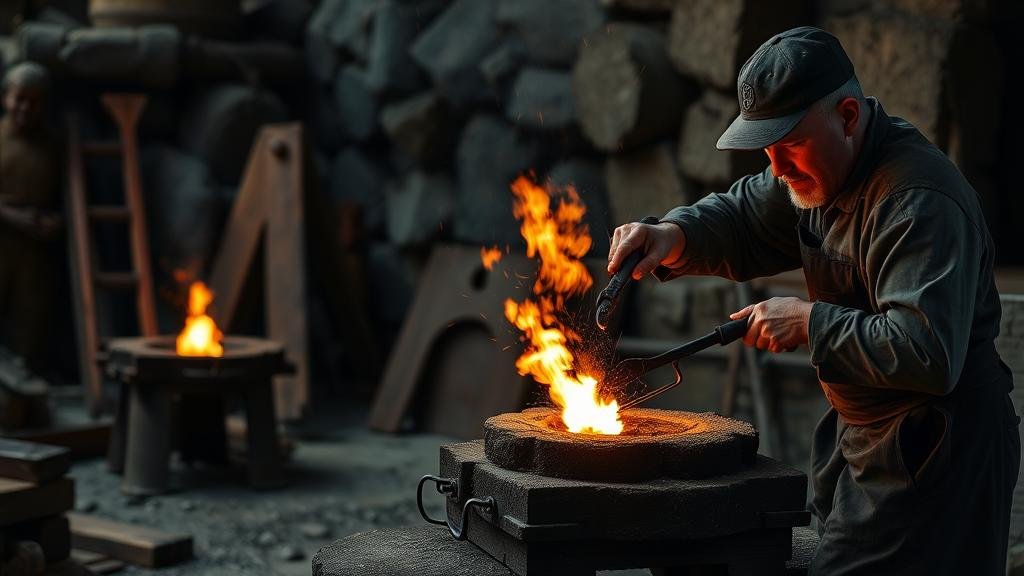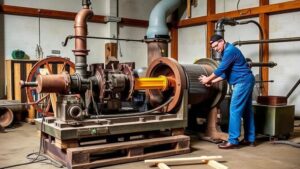How Ancient Blacksmithing Techniques Shaped Early Mining Practices
How Ancient Blacksmithing Techniques Shaped Early Mining Practices
Ancient blacksmithing practices played a crucial role in the development of early mining techniques, allowing societies to extract and manipulate metals essential for tools, weaponry, and infrastructure. These practices not only improved efficiency but also encouraged innovation in both mining and metallurgy, setting the foundation for modern industrial processes.
A Brief Overview of Blacksmithing
Blacksmithing is the craft of working with metal, primarily iron and steel, through heating and hammering. It dates back to at least 1500 BC, with early evidence found in the Near East and later in Europe and Asia. Blacksmiths were vital to their communities, supplying tools, agricultural implements, and weapons.
The Interconnection of Blacksmithing and Mining
The relationship between blacksmithing and mining is intimate; blacksmiths needed raw materials, which were obtained through mining. On the other hand, mining practices were enhanced by the tools and techniques developed by blacksmiths. This section explores the cyclical nature of this relationship.
Mining Tools Developed through Blacksmithing
Blacksmithing led to the creation of various tools that made mining more efficient. For example:
- Picks: The evolution of pick axes allowed miners to penetrate harder rock, improving access to valuable ores.
- Shovels and Trowels: These implements were essential for moving earth and debris, greatly assisting in ore extraction.
The refinement of these tools over centuries reflects the advancements in blacksmithing, where techniques like quenching and tempering led to stronger and more durable tools.
Case Study: The Roman Influence
The Romans significantly advanced both mining and blacksmithing techniques during their empire. They introduced more efficient methods such as hydraulic mining and the use of water wheels, which required iron frameworks and components. Roman blacksmiths were tasked with creating specialized tools for these processes, further cementing the importance of their craft.
For example, the introduction of the Roman hammer, a heavy hammer that increased the force behind strikes, greatly improved the efficiency of tool production and subsequently the extraction processes in mines.
Mining Techniques Borrowed from Blacksmithing
Techniques honed in blacksmithing directly impacted early mining practices. One significant method is:
- Forging Methods: Techniques such as welding and shaping metal were integral to creating miners tools, which required knowledge of heat application and metalworking. This expertise ensured that tools were not only effective but also optimized for the materials they would encounter.
The mutual learning and application of skills between blacksmiths and miners showcased how ancient societies continually innovated to meet their needs.
Innovations and their Impact on Society
The innovations stemming from blacksmithing and mining not only improved efficiency but also had far-reaching social implications. The production of better tools led to:
- Increased Ore Extraction: Societies could now extract metals in larger quantities, leading to greater production of tools and weapons.
- Development of Trade: With ample resources, metal became a central commodity, facilitating trade among ancient civilizations and contributing to the economy.
Statistics on Early Mining Practices
Historical estimates suggest that during the Roman Empire, the output of lead and silver from mines reached up to 80% of the total production in Europe. Such statistics illustrate how critical advancements in mining tools and practices were for economic growth and societal development.
Conclusion: Legacy of Blacksmithing on Modern Mining
Ancient blacksmithing techniques were not merely a craft; they were foundational to the advancement of mining practices. The symbiotic relationship between blacksmiths and miners fostered innovation, resulting in improved tools and techniques that shaped early industries and economies. Today’s mining operations, while technologically advanced, owe much to the principles established by these ancient practices.
As we delve into the historical context of blacksmithing and mining, we can appreciate the ingenuity of our ancestors and the enduring impact their innovations have on contemporary practices.
Actionable Takeaways
- Recognize the historical interplay between various crafts; understanding this can inspire innovation in modern industries.
- Learn from ancient techniques that prioritized efficiency and resourcefulness, which can be applied in todays technology-driven world.



